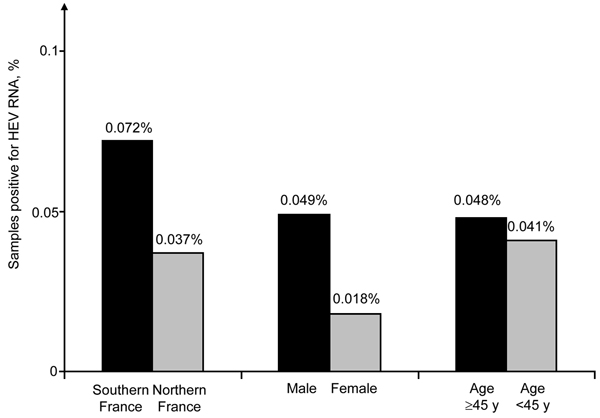Volume 20, Number 11—November 2014
Dispatch
Hepatitis E Virus Infections in Blood Donors, France
Figure 2

Figure 2. Frequency of blood donations positive for hepatitis E virus (HEV) RNA, by location and donor age and sex, France, November 27, 2012–December 1, 2013. Comparisons between groups by using χ2 and Fisher exact tests showed no significant differences.
Page created: October 17, 2014
Page updated: October 17, 2014
Page reviewed: October 17, 2014
The conclusions, findings, and opinions expressed by authors contributing to this journal do not necessarily reflect the official position of the U.S. Department of Health and Human Services, the Public Health Service, the Centers for Disease Control and Prevention, or the authors' affiliated institutions. Use of trade names is for identification only and does not imply endorsement by any of the groups named above.